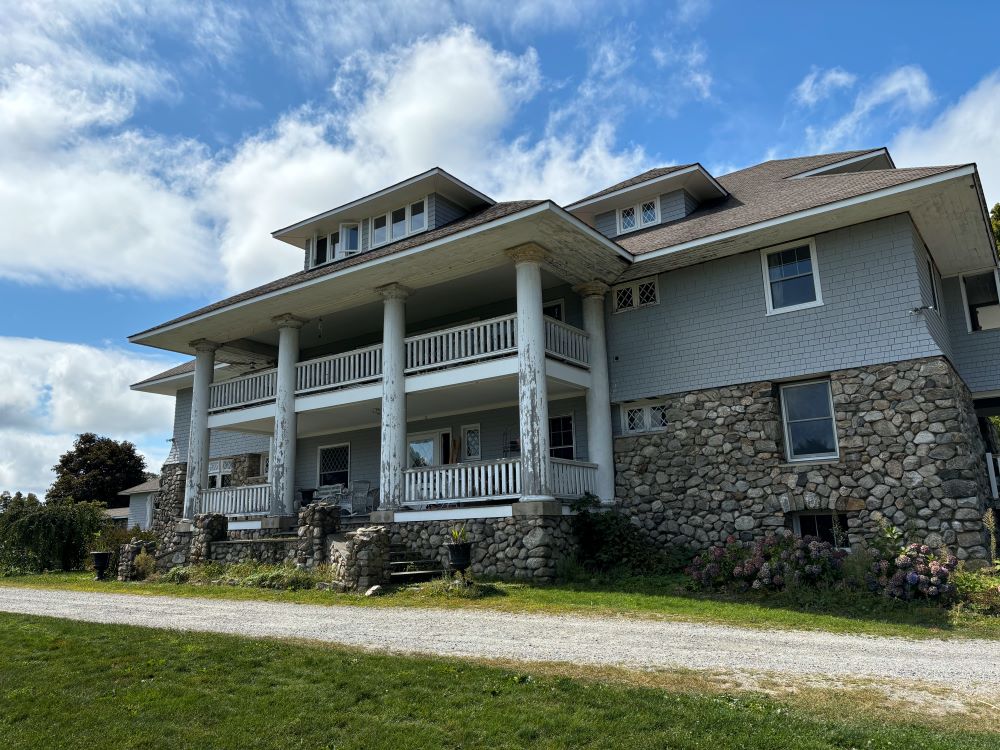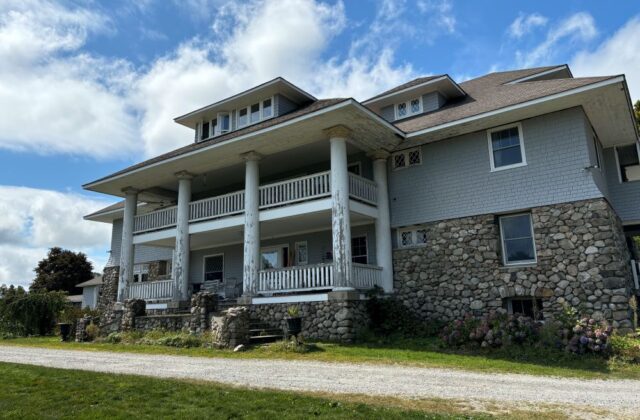The chicken who wanted to be a star and other tales from a norfolk movie set
By Andra Moss

Stars and spies spent the summer in Tim and Paula Webster’s Norfolk home during a recent film shoot.
Secrets and small towns don’t often pair well, and Norfolk is a small town. Yet, for eight weeks this summer, a crew of nearly 100 people quietly transformed Tim and Paula Webster’s 1908 Norfolk farmhouse into a film set for a feature-length production, all the while staying under the local radar.
It was early June when the film’s producers learned they had a serious problem—the coastal property for their shoot had just fallen through. The production window was closing fast when the Websters’ daughter, married to a location scout, suggested her parent’s rural Norfolk home. A team was dispatched to take a look, and the director quickly approved the house. Hollywood, Connecticut-style, instantly went into motion.
“Once it got started, it sort of took on a life of its own,” says Paula. Contracts were signed—“We had an agreement about what they could and couldn’t do with the house,” she says—and the Websters and their tenants were moved to other accommodations in the area.
Almost overnight, the basement, ground level and third floor of the 11,000 square-foot house were cleared. “They took away every single thing, floor to ceiling,” she says. “Thirty guys filled seven pods with boxes and furniture and took it all to storage.” A nearby building was tapped for dressing rooms and two large trailers for the film’s stars arrived.
The Websters are sworn to secrecy about much of the filming, but they describe it as “a spy mystery involving a counterfeiting ring” titled “Midnight”, with three female “recognized stars” in the lead roles. Almost every scene was filmed on the property, which was staged to look semi-abandoned.
With the house emptied, a transformation began. Rooms were repainted, artificial walls were built and lighting and sound systems were hung. One bedroom was set up for the art department, while the basement morphed into a counterfeiting lab (set). “You don’t really know what they need to do to produce a film until you see something like this,” says Tim.
The Websters returned daily to tend to their animals and gardens, getting a front-row seat for the four weeks of filming. “They let us sit in on scenes, standing right behind the director,” says Paula. “It was so interesting how they set it up. The lighting people can make moonlight or the sun appear at any time of day. Once, the light they created was so realistic that our rooster started crowing and they had to stop filming for a minute.”
Not to be upstaged by lesser poultry, one of their chickens kept walking into the house during shooting. “We think she wanted to be a star,” says Tim.
The farm animals took center stage with the cast, as well. “One star really fell in love with the cows and wanted to feed them,” says Paula, “so I brought home a bunch of bananas. When she held them out, one cow wrapped its tongue totally around her arm. She loved it!”
Then there was the day a stunt double crossed paths with a black bear on the driveway, bringing filming to a screeching halt when everyone ran for the house. Paula points out that “they didn’t realize there were always bears around them.”
Tim, meanwhile, became a fan of craft services, the department that provides food for the set. “Three times a day a caterer came in with a whole spread,” he marvels. “The strange thing is that the crew works in 12-hour shifts. So, if they start at four in the afternoon, they will have breakfast then, at 4 p.m.”
The cameras were also of deep interest. “Three cameras were going all the time,” says Tim. “They’d film, say, a fight scene for only eight seconds at a time—first with the two actors and then with the two stunt doubles, then one of each—so they could edit it how they want.” Paula remembers that “they killed [the villain] eight times in a row out in the backyard.”
Tim was impressed by how cautious the crew was with the prop weapons. “The armorer was very safe,” he says. “Everybody on the set, including us, could check the gun out to see that it was not real.”
Of special interest to Paula, “as a woman in business myself, were all the women in charge. There were camera women, the fight-scene choreographer was a woman and the supporting directors were women.”
While the Websters never made it on screen, they did make contributions to the film. First, says Tim, “The cast and crew were very grateful to us for allowing it. If we hadn’t, they might have lost the movie.” And on a more practical level, “they kept having to stop filming because they didn’t know how to shut anything off—the well pump, the furnace, the alarm. I had to keep coming back to show them which switch to flip.”
Following eight weeks of setup, shooting and teardown, Paula rates the overall experience as “very positive.” She looks forward to seeing the finished product and says they could easily be talked into sharing more details at a local viewing party. Adds her husband, “One of the biggest benefits is that we got to really clean the house.”

